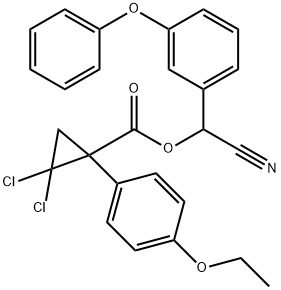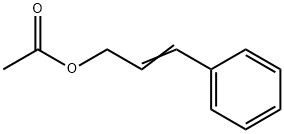BUPIRIMATE
- CAS NO.:41483-43-6
- Empirical Formula: C13H24N4O3S
- Molecular Weight: 316.42
- MDL number: MFCD00055518
- EINECS: 255-391-2
- SAFETY DATA SHEET (SDS)
- Update Date: 2025-10-29 15:43:00

What is BUPIRIMATE?
The Uses of BUPIRIMATE
Bupirimate is a pyrimidine based fungicide with protective and curative activity for the control of fungal diseases by interfearing with nucleic acid synthesis.
The Uses of BUPIRIMATE
Fungicide.
The Uses of BUPIRIMATE
Bupirimate is a systemic fungicide that provides protective and curative control of powdery mildew (Podosphaera leucotricha) mainly in pome fruits, stone fruits and glasshouse roses. Other uses include berries, vines and cucurbits.
Definition
ChEBI: A member of the class of aminopyrimidines that is 2-ethylaminopyrimidine carrying methyl, butyl and dimethylaminosulfooxy substituents at posiitons 4, 5 and 6 respectively.
Metabolic pathway
Bupirimate degrades rapidly when exposed to sunlight. Minimal penetration of bupirimate residues in treated apples was observed. Degradation of bupirimate in/on fruit surfaces was mainly due to photolytic processes. Metabolism in plants and animals is similar and includes the initial cleavage of the dimethylsulfamate-pyrimidine linkage to yield ethirimol which is also an active fungicide. Numerous degradation products were generated from N-dealkylation, hydroxylation and conjugation reactions and the opening of the pyrimidine ring (Scheme 1).
Degradation
Bupirimate (1) is stable in dilute alkaline solution, but readily hydrolysed in dilute acidic solution. Bupirimate was rapidly decomposed in aqueous solution when exposed to sunlight (Hassall, 1982). Cleavage of the dimethylsulfamate-pyrimidine linkage yielded ethirimol [5-butyl-2- ethylamino-6-methylpyrimidin-4-ol (2)] as the major product. Ethirimol, an active fungicide, was degraded slowly under these test conditions. Four additional minor products were also detected. Three of these products were identified aS isomers of bupirimate, resulting from the migration of the dimethylsulfamate moiety to the various nitrogen molecules (compounds 3, 4 and 5; Cavell and Lincoln, 1974; Teal and Skidmore, 1976).
Properties of BUPIRIMATE
| Melting point: | 50-51° |
| Boiling point: | 463.2±55.0 °C(Predicted) |
| Density | 1.2120 (rough estimate) |
| vapor pressure | 1.0 x 10-4 Pa at 25 °C |
| refractive index | 1.6200 (estimate) |
| Flash point: | 100 °C |
| storage temp. | 0-6°C |
| solubility | Chloroform (Slightly), DMSO (Slightly), Ethyl Acetate (Slightly) |
| form | neat |
| Water Solubility | 22 mg l-1 (pH 5.2), 18 mg l-1 (pH 7.3),
17 mg l-1 (pH 9.3) at 25 °C |
| form | Solid |
| pka | 5 |
| color | White to Pale Beige |
| Merck | 13,1482 |
| BRN | 758056 |
| EPA Substance Registry System | Bupirimate (41483-43-6) |
Safety information for BUPIRIMATE
| Signal word | Warning |
| Pictogram(s) |
 Exclamation Mark Irritant GHS07  Health Hazard GHS08  Environment GHS09 |
| GHS Hazard Statements |
H312:Acute toxicity,dermal H317:Sensitisation, Skin H351:Carcinogenicity H410:Hazardous to the aquatic environment, long-term hazard |
| Precautionary Statement Codes |
P202:Do not handle until all safety precautions have been read and understood. P261:Avoid breathing dust/fume/gas/mist/vapours/spray. P273:Avoid release to the environment. P280:Wear protective gloves/protective clothing/eye protection/face protection. P308+P313:IF exposed or concerned: Get medical advice/attention. |
Computed Descriptors for BUPIRIMATE
| InChIKey | DSKJPMWIHSOYEA-UHFFFAOYSA-N |
New Products
4,4-Difluoropiperidine hydrochloride tert-butyl 9-methoxy-3-azaspiro[5.5]undecane-3-carboxylate Indole Methyl Resin N-Isopropylurea N,N-Dicyclohexylcarbodiimide(DCC) MELDRUMS ACID 5-METHYLISOXAZOLE-4-CARBOXYLIC ACID Magnessium Bis glycinate Zinc ascorbate 1-bromo-2-butyne 2-acetamidophenol 9(10H)-anthracenone Erythrosin B, 4-Piperidinopiperidine 2-((4-morpholinophenylamino) (methylthio) methylene) malononitrile 2,4-dihydroxybenzaldehyde 3-(4-morpholinophenylamino)-5-amino-1H-pyrazole-4-carbonitrile Methyl 2-methylquinoline-6-carboxylate 2,6-dichloro-4-nitropyridine 4-Bromo-2-chlorobenzonitrile 2-(benzylamino)acetic acid hydrochloride 4-(tert-Butoxycarbonylamino)but- 2-ynoic acid 3,4-dihydro-2H-benzo[b][1,4]dioxepine 1-Phenyl-1-cycloprppanecarboxylicacidRelated products of tetrahydrofuran








You may like
-
 Bupirimate CAS 41483-43-6View Details
Bupirimate CAS 41483-43-6View Details
41483-43-6 -
 Bupirimate CAS 41483-43-6View Details
Bupirimate CAS 41483-43-6View Details
41483-43-6 -
 Bupirimate CAS 41483-43-6View Details
Bupirimate CAS 41483-43-6View Details
41483-43-6 -
 3-(4-amino-1-oxoisoindolin-2-yl)-1-methylpiperidine-2,6-dione 98%View Details
3-(4-amino-1-oxoisoindolin-2-yl)-1-methylpiperidine-2,6-dione 98%View Details -
 20677-73-0 (2,2-diethoxyethyl)methylamine 98%View Details
20677-73-0 (2,2-diethoxyethyl)methylamine 98%View Details
20677-73-0 -
 3-(4-(hydroxyamino)-1-oxoisoindolin-2-yl)piperidine-2,6-dione 98%View Details
3-(4-(hydroxyamino)-1-oxoisoindolin-2-yl)piperidine-2,6-dione 98%View Details -
 57381-49-4 2-bromo-4-chlorobenzonitrile 98%View Details
57381-49-4 2-bromo-4-chlorobenzonitrile 98%View Details
57381-49-4 -
 4,6-dichloropyrimidine-5-carbaldehyde 98%View Details
4,6-dichloropyrimidine-5-carbaldehyde 98%View Details
5305-40-8
